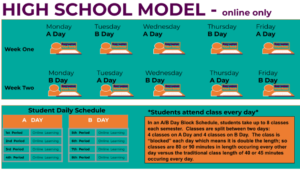Student choice to the course level is key to making sure that every student has the best possible education and dramatically increasing investment in adaptive digital content. But how do we avoid a crazy digital iTunes-like version of the shopping mall high school?
One of the big unappreciated benefits of good small schools (and what distinguished them from bad small schools) is coherence. By coherence, I mean that everything works together for kids and teachers–a core curriculum supported by structure, schedule, staffing, connections, and resources. The opportunity to produce a coherent program and the potential that students will gain the benefits of a coherent program are diminished if kids take whatever they want.
One solution would be an advisor. The individual learning plan proposed in some states would actually be a good idea if it weren’t universally used to block choice–Students are routinely discouraged from taking online or dual enrollment courses because schools don’t want to lose the revenue. The policy questions is how to encourage smart school and course choices that adds up to an efficient/effective pathway to graduation.
One solution is to make students/families pick a primary provider–district, charter or online school–for transcript management and guidance. District schools will still discourage choice, but perhaps a state mandated choice info system will help a bit.
Have a better idea?






Mike McCannn
I like the concept. What is your opposition to a "crazy iTunes like shopping mall?"
I support professional guidance, but oppose the current factory-like schooling we are currently offering. We are stifling independent thinking by keeping all students on the same page of the same book.
Replies
Tom Vander Ark
Two problems will the shopping mall high school: kids get lots of choices with varying degrees of difficulty (tracks) without guidance.
Higher Common Core aligned grad requirements will deal with most of the first, but kid/families need guidance to put the optimal schedule together. We're a few years away from a smart recommendation engine and really good guidance applications.
Some schools will provide decent guidance but most will steer kids away from online options.
Burck Smith
Hi Tom -- I wrote a book chapter about this for AEI in the summer of 2008. I think it's going to be published in the Spring of 2010. The basic idea is that, not only do you need course level choice, but you need real rewards that accrue to the chooser for making more efficient choices. While it's probably not scalable to give students and families a percentage of savings. What may be possible is to use a point system -- like HR cafeteria models. Students get X number of points which can be distributed across their choices subject to parameters and distribution requirements created by the school. This has the benefit of including extracurriculars and services in addition to academic courses. For those interested, here's a link:
http://www.aei.org/docLib/Burck%20Smith-%20More%20Than%20Just%20School%20Conference%20Draft.pdf
Burck Smith
Sorry, to be published in Spring of 2011...